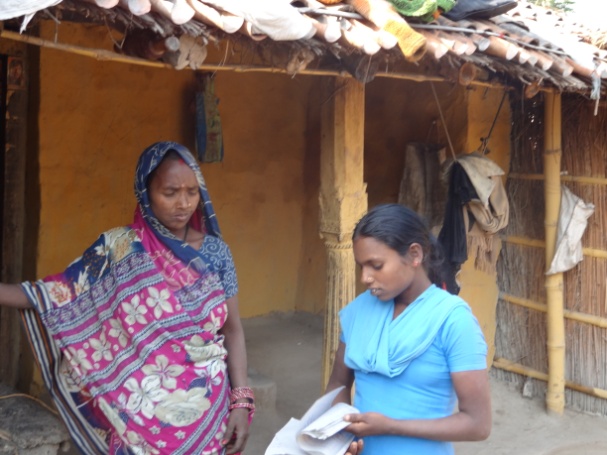[vc_row][vc_column width=”1/1″][vc_column_text]
The dream of being a student
By Jennifer Brookland
[/vc_column_text][/vc_column][/vc_row][vc_row][vc_column width=”2/3″][vc_column_text]

There was not a very good chance that shy, 16-year-old Phoolo was going to stay in school. So much was stacked against her: A history of irregular attendance, the burden of caring for her younger siblings and then the need to work as a part-time maid instead of advancing her education.
“Phoolo has always been interested in reading and writing,” says Phoolo’s mother Urmila Devi. “As a kid she would borrow books from other people and try and read. It’s because of lack of funds in our family that we couldn’t get her to school consistently.”
Much older than her Gurmha Middle School classmates, it also wasn’t easy for Phoolo to make friends, and she never felt engaged at school. Having to return home often to take care of her brothers and sisters did not leave much time for friendship, or extra activities that would have made learning more fun.
Instead of encouraging Phoolo’s scholastic success, her parents were trying to get her married.
Funded by the US Agency for International Development, Creative Associates International developed an early warning tool as part of the Student Dropout Prevention Program (SDPP), which took all of these obstacles into account when staff evaluated Phoolo. Based on her scores on attendance, behavior, course performance and work obligations, it became clear that Phoolo was at high risk of dropping out of school.
SDPP’s staff worked with Phoolo’s teachers, parents and school administrators to give her extra attention. Her teacher started tracking her attendance regularly, made sure she participated in class and even scheduled regular home visits to meet with her parents as part of the tracking and case management system.
Phoolo was also enrolled in SDPP enrichment sessions, which included activities to encourage creative expression. As she got more involved in the enrichment sessions, she started building stronger relationships with her classmates and teachers.
Initially subdued and hesitant, something shifted in her the day another girl gave a presentation about Phoolo. The topic was friendship.
During the next six months, Phoolo went from missing one in three school days to having an attendance rate of 90 percent.
Her teacher’s consistent efforts to communicate with Phoolo’s parents convinced them of the importance of keeping their daughter in school, and they became increasingly involved in her education.
Instead of attending her wedding, Phoolo’s mother had tears in her eyes as she proudly arrived at her first Anand Utsav: the school’s open house. Soon afterward, she decided Phoolo should stop working and focus on academics.
“Since I have started coming to school regularly, no one teases me anymore,” says Phoolo. “I have made a lot of friends. At home my parents give me less work to do and encourage me to attend school and study instead.”
Today, Phoolo even brings her younger sister to class sometimes. She hopes her sister can one day realize the same dream: just being a student.[/vc_column_text][/vc_column][vc_column width=”1/12″][/vc_column][vc_column width=”1/4″][vc_widget_sidebar sidebar_id=”sidebar-primary”][/vc_column][/vc_row]